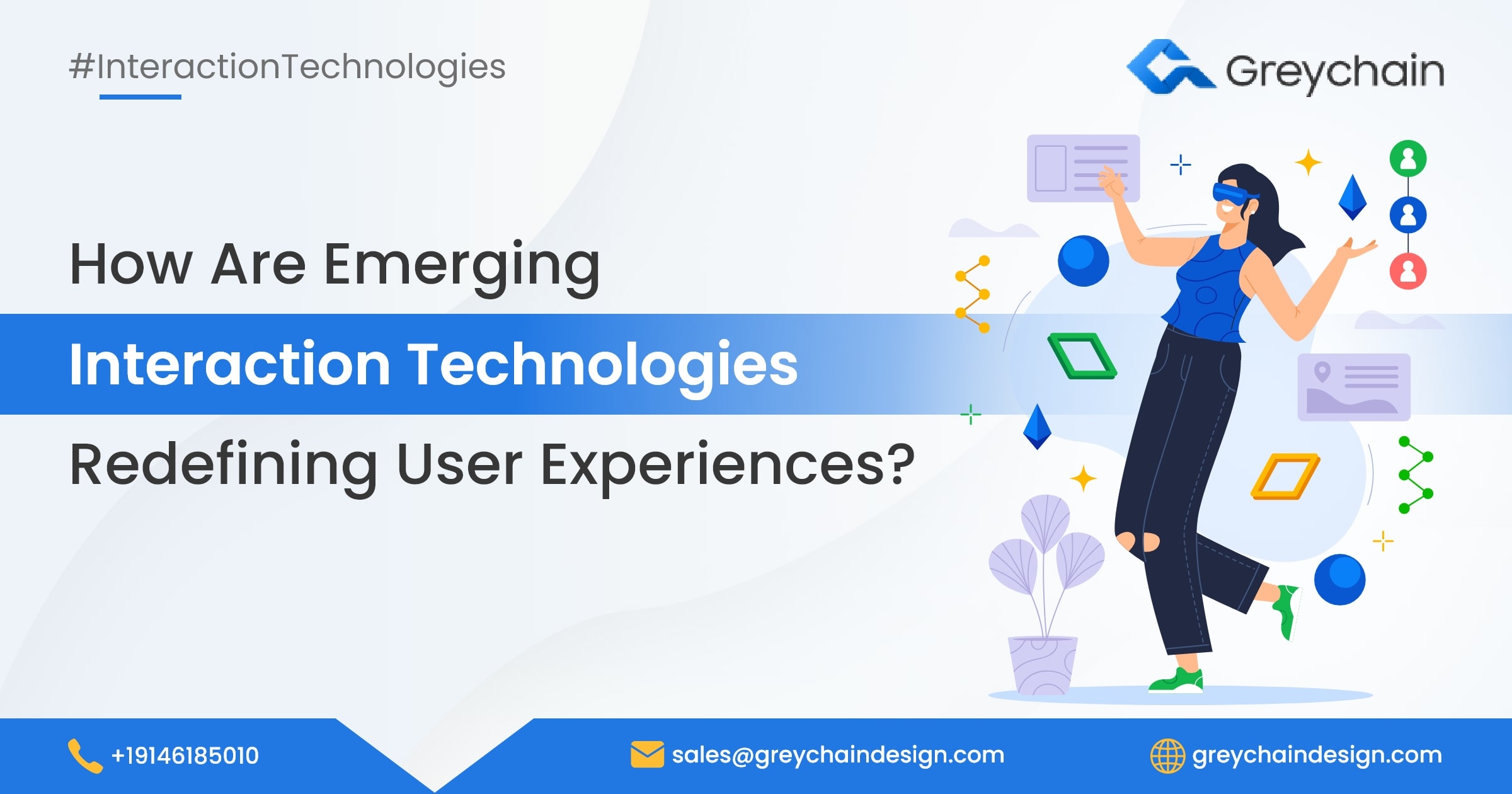In an era of continuous and dramatic technological innovation, UX designers face the ongoing challenge of crafting intuitive and user-centric experiences tailored to the demands of a tech-savvy user base. As traditional inputs like keyboards and mouse become obsolete, emerging interaction technologies like gestures, haptics, and AR/VR take center stage. The global market for these technologies alone is projected to surge to a staggering US$22.3 billion by 2024. This rapid change raises an important question- How are these emerging technologies transforming user experience as we know it?
The Rising Influence of Gestures and Haptics
Gestures and haptics have quickly risen as powerful tools that are enhancing digital interactions by making user interactions intuitive and engaging. For example, the Apple Watch leverages gesture controls, such as tapping, swiping, and rotating the digital crown, to navigate through its interface. These gestures make it easier for users to access apps, notifications, and features. While gestures and haptics have the potential to be a part of a limitless scope for innovation, they also promote inclusivity. For instance, enabling haptic feedback allows visually impaired users to navigate touchscreen devices. Users can feel and interpret haptic cues, enabling them to access information, interact with apps, without relying solely on visual or auditory feedback.
Impact of Augmented and Virtual Reality
From enabling aspiring doctors to practice surgery in a virtual environment before working on real patients to creating virtual showrooms and test drives, AR/VR are now being recognized as the technology of choice for several use cases including retail, automotive & healthcare industry. These technologies enable users to interact with digital content in three-dimensional space, necessitating creative and intuitive design solutions. However, designers must address challenges like motion sickness and hardware requirements to ensure a comfortable and inclusive user experience. With the AR market projected to reach $50 billion by 2024, the importance of these technologies in UX design continues to grow, demanding ongoing innovation and adaptation.
Unlocking the realm of Spatial UX
One exciting design innovation intrinsically linked to the progress of AR and VR technologies is Spatial UX. SUX, a specialized UX field, places a strong emphasis on crafting user experiences in three-dimensional space, necessitating considerations like spatial awareness, 3D design, natural language processing (NLP) and intuitive interfaces for gestural and eye-tracking interactions. Its influence is particularly growing in sectors such as gaming, education and real estate, where it enhances immersive experiences, simulations, and spatial context. Ultimately, SUX represents a pivotal shift in design thinking, where the physical and digital worlds converge to redefine user engagement and interaction in an increasingly immersive environment.
As designers, developers, and users, we’re on the cusp of an exciting era where curiosity is the driving force. What game changing innovations have caught your eye?

 Get in Touch
Get in Touch
